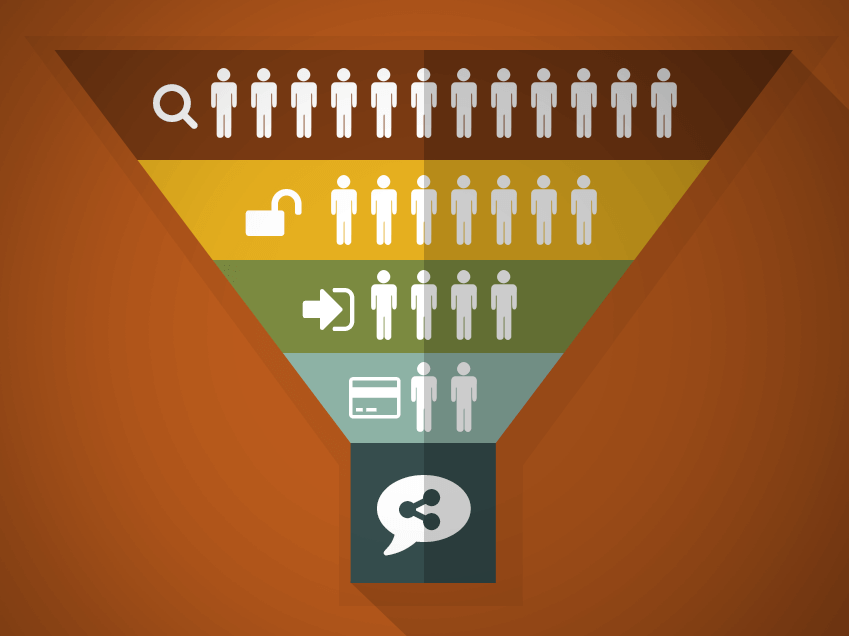The purpose of every business is to generate revenues by selling the goods or services it deals in. E-commerce is no exception even if the way it sells differs a lot from that followed by conventional businesses. Both e-commerce sellers and brick-and-mortar merchants have to follow a sales funnel that defines the steps of transforming visitors into clients. The challenge for online merchants is, however, bigger because they do not have a direct, physical connection with the customer. The key lies in understanding and creating the e-commerce sales funnel to boost the site’s performance and maximize the conversions. Experts from Conversionrate.store believe creating this funnel is an art as well as science and there is a need to gain an in-depth understanding if you want it to really work.
Stages of E-Commerce Sales Funnel
It is easier to understand an e-commerce sales funnel as a journey that comprises of a number of stages. The purpose is to move the visitor from one stage to another till he completes the transaction successfully and becomes a customer. A typical e-commerce sales funnel comprises of four stages, which are mentioned as follows:
Awareness: The initial stage of an e-commerce sales funnel is the awareness stage. As the name suggests, it is concerned with introducing the product or service to the first-time customers. With e-commerce selling, this stage is to be handled with the right digital marketing strategies. The visitors in this stage are made to reach the site through organic sources (such as search engine and social media) or paid sources (such as Google AdWords or affiliates).
Interest: Once the user crosses the awareness stage, the next stage is that of creating interest. This is when the real work starts as now you have to create interest of the visitor in your product or service. You already may have introduced it in the first stage but now is the time to capture their attention by giving them a value proposition. This is the stage when you need to target them with relevant content, attractive visuals (images and videos) and enticing offers. The focus is on enhancing the user engagement and keeping them on the website long enough to drive conversions.
Desire: In the next step of the funnel, you create a desire to buy and this is done by building a relationship of trust with the visitor. This is done by affirming the value of the product as well as reassuring the visitors that they are being served nothing but the best. Typically, personalized targeting is the mainstay of this stage of the funnel. Email marketing is the technique that most sellers focus on for connecting directly with the potential buyers. Similarly, showing customer testimonials and reviews on your website adds to the trust factor.
Action: The fourth stage of the e-commerce sales funnel is the action stage. This is considered as the most crucial step because all the previous stages get materialized as the user takes action and completes a transaction to become a customer. It not only signifies conversion but also indicates a connection between the visitor (now, a customer) and the brand. At this stage, the quality of user experience matters the most. The website should have an intuitive design, clean and simple checkout pages, multiple payment options and clear shipping details to ensure that the visitor completes the checkout process.
How to create an optimized e-commerce conversion funnel?
Creating an optimized e-commerce funnel for your business can be a challenging job but the rewards it brings can be phenomenal. Therefore, it becomes important to understand the science of e-commerce conversion and also establish the right mix of strategies to get optimal results. Here are some tips and ideas that you can work on:
Create buyer personas: Since you cannot meet the buyers physically during the selling process, creating buyer personas is the best bet. Try and understand the kind of prospects who are likely to approach you with the intent to buy. The best to do is to analyze their online behavior and gather information related to their demographics, preferences and behavior pattern. Once you have a clear idea of the kind of customers you need to target, it becomes easier to create targeted content and strategy to attract them.
Offer simplified navigation: Conversion is hindered by a complicated navigation on the website. So you need to make sure that you offer a simplified navigation so that the users are able to proceed intuitively to search the exact product they are looking for. Avoid having redundant features on the website and keep the elements neat and well-linked. Providing easy search functionality is another great idea to optimize the conversion funnel.
Build trust with responsibility: Just like a responsible brick-and-mortar seller, try to build the trust of the visitor in more than one ways. Offer help and answers to those who need it, with elements such as FAQs and customer support. Also, highlight the trust-building elements such as customer testimonials, positive reviews and accreditations received by the business.
Analyze the website and locate issues: Besides focusing on giving positive experiences, you should also try to identify the negatives in your website. A thorough analysis of the website can help you locate issues with the interface, functionalities and performance which may be hindering the conversions. Once you locate these issues, work on resolving them for optimizing the conversion funnel.
Encourage repurchasing: Although all the emphasis is on converting new customers for the business, you should not ignore the existing ones at any cost. It is important to encourage repurchasing by rewarding the repeat shoppers and giving them plenty of reasons to return for more.
Conversion funnel optimization is an extensive strategy that drives effective results. You need to be extra creative and think smart for getting winning benefits. Check this guide on ecommerce funnel optimization to help you with more ideas. Partnering with marketing experts is another smart move as they can help you understand the conversion funnel in a better way and also optimize it for the highest conversions and growth.
Related Posts












